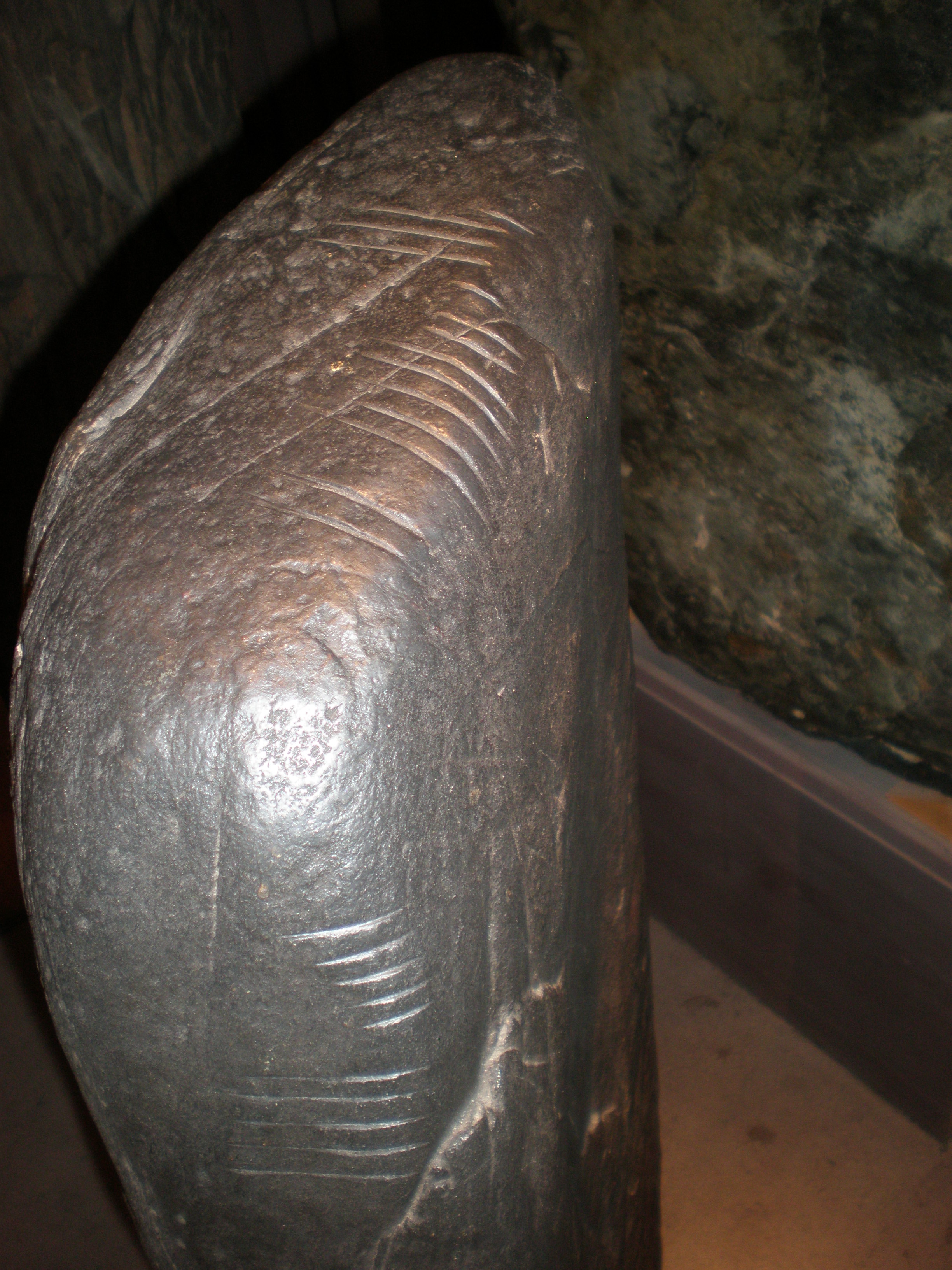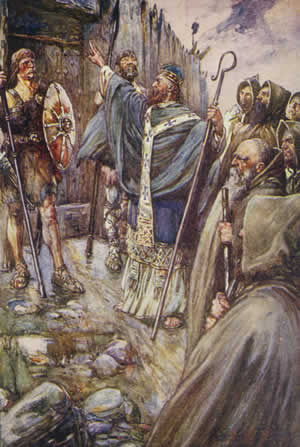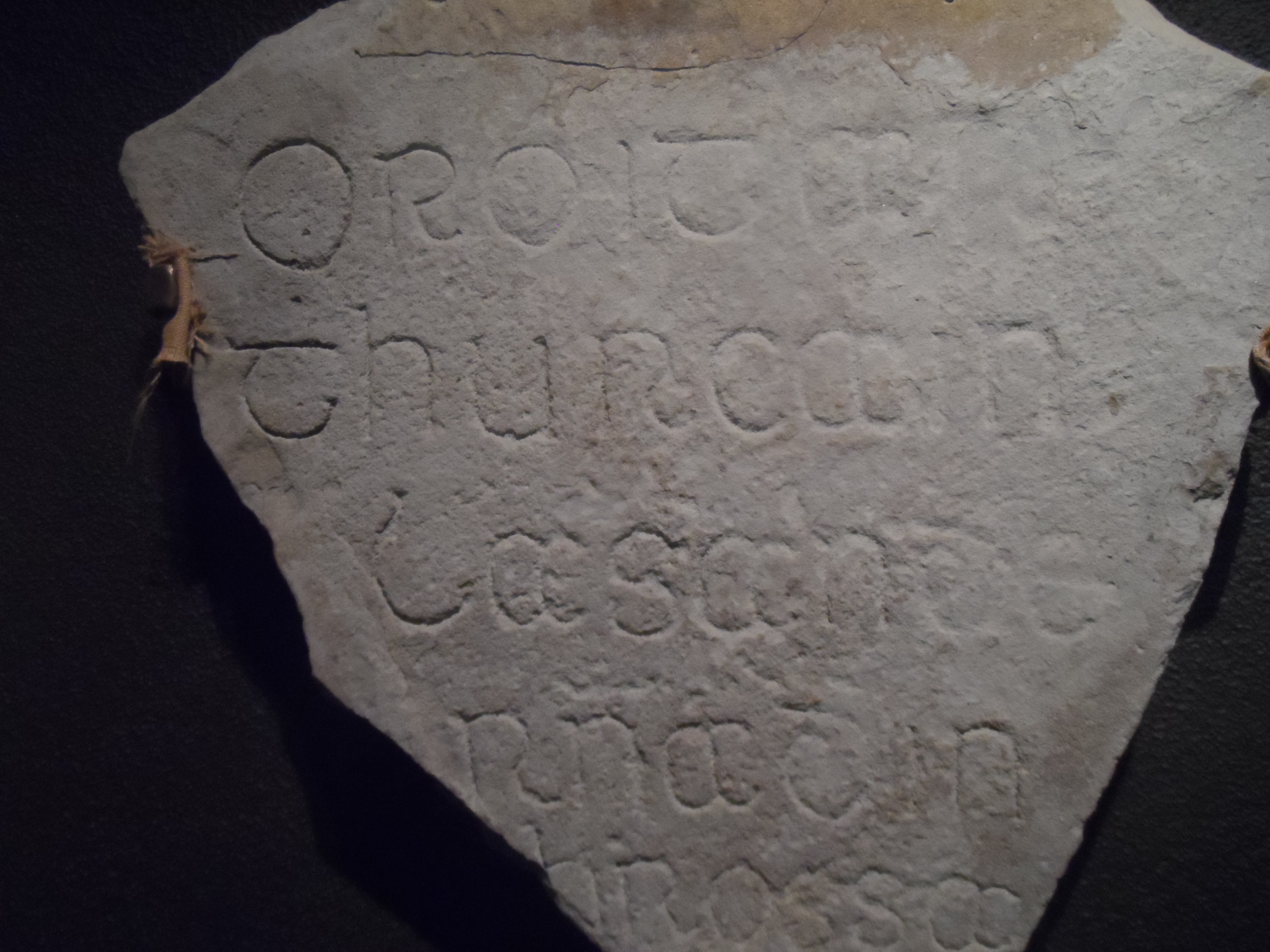|
Goidelic
The Goidelic or Gaelic languages ( ga, teangacha Gaelacha; gd, cànanan Goidhealach; gv, çhengaghyn Gaelgagh) form one of the two groups of Insular Celtic languages, the other being the Brittonic languages. Goidelic languages historically formed a dialect continuum stretching from Ireland through the Isle of Man to Scotland. There are three modern Goidelic languages: Irish ('), Scottish Gaelic ('), and Manx ('). Manx died out as a first language in the 20th century but has since been revived to some degree. Nomenclature ''Gaelic'', by itself, is sometimes used to refer to Scottish Gaelic, especially in Scotland, and so it is ambiguous. Irish and Manx are sometimes referred to as Irish Gaelic and Manx Gaelic (as they are Goidelic or Gaelic languages), but the use of the word "Gaelic" is unnecessary because the terms Irish and Manx, when used to denote languages, always refer to those languages. This is in contrast to Scottish Gaelic, for which "Gaelic" distinguishes the l ... [...More Info...] [...Related Items...] OR: [Wikipedia] [Google] [Baidu] |
Manx Language
Manx ( or , pronounced or ), also known as Manx Gaelic, is a Gaelic language of the insular Celtic branch of the Celtic language family, itself a branch of the Indo-European language family. Manx is the historical language of the Manx people. Although only few children native to the Isle of Man speak Manx as a first language, there has been a steady increase in the number of speakers since the death of Ned Maddrell in 1974. He was considered to be the last speaker to grow up in a Manx-speaking community environment. Despite this, the language has never fallen completely out of use, with a minority having some knowledge of it as a heritage language, and it is still an important part of the island's culture and cultural heritage. Manx is often cited as a good example of language revival efforts; in 2015, around 1,800 people had varying levels of second-language conversational ability. Since the late 20th century, Manx has become more visible on the island, with increased si ... [...More Info...] [...Related Items...] OR: [Wikipedia] [Google] [Baidu] |
Celtic Languages
The Celtic languages ( usually , but sometimes ) are a group of related languages descended from Proto-Celtic. They form a branch of the Indo-European language family. The term "Celtic" was first used to describe this language group by Edward Lhuyd in 1707, following Paul-Yves Pezron, who made the explicit link between the Celts described by classical writers and the Welsh and Breton languages. During the 1st millennium BC, Celtic languages were spoken across much of Europe and central Anatolia. Today, they are restricted to the northwestern fringe of Europe and a few diaspora communities. There are six living languages: the four continuously living languages Breton, Irish, Scottish Gaelic and Welsh, and the two revived languages Cornish and Manx. All are minority languages in their respective countries, though there are continuing efforts at revitalisation. Welsh is an official language in Wales and Irish is an official language of Ireland and of the European Union. Welsh ... [...More Info...] [...Related Items...] OR: [Wikipedia] [Google] [Baidu] |
Brittonic Languages
The Brittonic languages (also Brythonic or British Celtic; cy, ieithoedd Brythonaidd/Prydeinig; kw, yethow brythonek/predennek; br, yezhoù predenek) form one of the two branches of the Insular Celtic language family; the other is Goidelic. The name ''Brythonic'' was derived by Welsh Celticist John Rhys from the Welsh word , meaning Ancient Britons as opposed to an Anglo-Saxon or Gael. The Brittonic languages derive from the Common Brittonic language, spoken throughout Great Britain during the Iron Age and Roman period. In the 5th and 6th centuries emigrating Britons also took Brittonic speech to the continent, most significantly in Brittany and Britonia. During the next few centuries the language began to split into several dialects, eventually evolving into Welsh, Cornish, Breton, Cumbric, and probably Pictish. Welsh and Breton continue to be spoken as native languages, while a revival in Cornish has led to an increase in speakers of that language. Cumbric and Pictish are ... [...More Info...] [...Related Items...] OR: [Wikipedia] [Google] [Baidu] |
Irish Language
Irish ( Standard Irish: ), also known as Gaelic, is a Goidelic language of the Insular Celtic branch of the Celtic language family, which is a part of the Indo-European language family. Irish is indigenous to the island of Ireland and was the population's first language until the 19th century, when English gradually became dominant, particularly in the last decades of the century. Irish is still spoken as a first language in a small number of areas of certain counties such as Cork, Donegal, Galway, and Kerry, as well as smaller areas of counties Mayo, Meath, and Waterford. It is also spoken by a larger group of habitual but non-traditional speakers, mostly in urban areas where the majority are second-language speakers. Daily users in Ireland outside the education system number around 73,000 (1.5%), and the total number of persons (aged 3 and over) who claimed they could speak Irish in April 2016 was 1,761,420, representing 39.8% of respondents. For most of recorded ... [...More Info...] [...Related Items...] OR: [Wikipedia] [Google] [Baidu] |
Insular Celtic Languages
Insular Celtic languages are the group of Celtic languages of Brittany, Great Britain, Ireland, and the Isle of Man. All surviving Celtic languages are in the Insular group, including Breton, which is spoken on continental Europe in Brittany, France. The Continental Celtic languages, although once quite widely spoken in mainland Europe and in Anatolia, are extinct. Six Insular Celtic languages are extant (in all cases written and spoken) in two distinct groups: * Brittonic (or Brythonic) languages: Breton, Cornish, and Welsh * Goidelic languages: Irish, Manx, and Scottish Gaelic Insular Celtic hypothesis The "Insular Celtic hypothesis" is a theory that they evolved together in those places, having a later common ancestor than any of the Continental Celtic languages such as Celtiberian, Gaulish, Galatian and Lepontic, among others, all of which are long extinct. The proponents of the hypothesis (such as Cowgill 1975; McCone 1991, 1992; and Schrijver 1995) point to share ... [...More Info...] [...Related Items...] OR: [Wikipedia] [Google] [Baidu] |
Gaels
The Gaels ( ; ga, Na Gaeil ; gd, Na Gàidheil ; gv, Ny Gaeil ) are an ethnolinguistic group native to Ireland, Scotland and the Isle of Man in the British Isles. They are associated with the Gaelic languages: a branch of the Celtic languages comprising Irish, Manx and Scottish Gaelic. Gaelic language and culture originated in Ireland, extending to Dál Riata in western Scotland. In antiquity, the Gaels traded with the Roman Empire and also raided Roman Britain. In the Middle Ages, Gaelic culture became dominant throughout the rest of Scotland and the Isle of Man. There was also some Gaelic settlement in Wales, as well as cultural influence through Celtic Christianity. In the Viking Age, small numbers of Vikings raided and settled in Gaelic lands, becoming the Norse-Gaels. In the 9th century, Dál Riata and Pictland merged to form the Gaelic Kingdom of Alba. Meanwhile, Gaelic Ireland was made up of several kingdoms, with a High King often claiming lordship over ... [...More Info...] [...Related Items...] OR: [Wikipedia] [Google] [Baidu] |
Scottish Gaelic
Scottish Gaelic ( gd, Gàidhlig ), also known as Scots Gaelic and Gaelic, is a Goidelic language (in the Celtic branch of the Indo-European language family) native to the Gaels of Scotland. As a Goidelic language, Scottish Gaelic, as well as both Irish and Manx, developed out of Old Irish. It became a distinct spoken language sometime in the 13th century in the Middle Irish period, although a common literary language was shared by the Gaels of both Ireland and Scotland until well into the 17th century. Most of modern Scotland was once Gaelic-speaking, as evidenced especially by Gaelic-language place names. In the 2011 census of Scotland, 57,375 people (1.1% of the Scottish population aged over 3 years old) reported being able to speak Gaelic, 1,275 fewer than in 2001. The highest percentages of Gaelic speakers were in the Outer Hebrides. Nevertheless, there is a language revival, and the number of speakers of the language under age 20 did not decrease between the 2001 and ... [...More Info...] [...Related Items...] OR: [Wikipedia] [Google] [Baidu] |
Pictish Language
Pictish is the extinct Brittonic language spoken by the Picts, the people of eastern and northern Scotland from Late Antiquity to the Early Middle Ages. Virtually no direct attestations of Pictish remain, short of a limited number of geographical and personal names found on monuments and the contemporary records in the area controlled by the kingdoms of the Picts, dating to the early medieval period. Such evidence, however, points strongly to the language being an Insular Celtic language related to the Brittonic language spoken prior to Anglo-Saxon settlement in what is now southern Scotland, England, and Wales. The prevailing view in the second half of the 20th century was that Pictish was a non-Indo-European language isolate, predating a Gaelic colonisation of Scotland or that a non-Indo-European Pictish and Brittonic Pictish language coexisted. Pictish was replaced by – or subsumed into – Gaelic in the latter centuries of the Pictish period. During the reign of Domnall ... [...More Info...] [...Related Items...] OR: [Wikipedia] [Google] [Baidu] |
Primitive Irish
Primitive Irish or Archaic Irish ( ga, Gaeilge Ársa), also called Proto-Goidelic, is the oldest known form of the Goidelic languages. It is known only from fragments, mostly personal names, inscribed on stone in the ogham alphabet in Ireland and western Great Britain between the 4th and the 6th century AD. Characteristics Transcribed ogham inscriptions, which lack a letter for , show Primitive Irish to be similar in morphology and inflections to Gaulish, Latin, Classical Greek and Sanskrit. Many of the characteristics of modern (and medieval) Irish, such as initial mutations, distinct "broad" and "slender" consonants and consonant clusters, are not yet apparent. More than 300 ogham inscriptions are known in Ireland, including 121 in County Kerry and 81 in County Cork, and more than 75 found outside Ireland in western Britain and the Isle of Man, including more than 40 in Wales, where Irish colonists settled in the 3rd century, and about 30 in Scotland, although some of thes ... [...More Info...] [...Related Items...] OR: [Wikipedia] [Google] [Baidu] |
Old Irish
Old Irish, also called Old Gaelic ( sga, Goídelc, Ogham script: ᚌᚑᚔᚇᚓᚂᚉ; ga, Sean-Ghaeilge; gd, Seann-Ghàidhlig; gv, Shenn Yernish or ), is the oldest form of the Goidelic/Gaelic language for which there are extensive written texts. It was used from 600 to 900. The main contemporary texts are dated 700–850; by 900 the language had already transitioned into early Middle Irish. Some Old Irish texts date from the 10th century, although these are presumably copies of texts written at an earlier time. Old Irish is thus forebear to Modern Irish, Manx, and Scottish Gaelic. Old Irish is known for having a particularly complex system of morphology and especially of allomorphy (more or less unpredictable variations in stems and suffixes in differing circumstances) as well as a complex sound system involving grammatically significant consonant mutations to the initial consonant of a word. Apparently,It is difficult to know for sure, given how little Primit ... [...More Info...] [...Related Items...] OR: [Wikipedia] [Google] [Baidu] |
Isle Of Man
) , anthem = "O Land of Our Birth" , image = Isle of Man by Sentinel-2.jpg , image_map = Europe-Isle_of_Man.svg , mapsize = , map_alt = Location of the Isle of Man in Europe , map_caption = Location of the Isle of Man (green) in Europe (dark grey) , subdivision_type = Sovereign state , subdivision_name = United Kingdom , established_title = Norse control , established_date = 9th century , established_title2 = Scottish control , established_date2 = 2 July 1266 , established_title3 = English control , established_date3 = 1399 , established_title4 = Revested into British Crown , established_date4 = 10 May 1765 , official_languages = , capital = Douglas , coordinates = , demonym = Manx; Manxman (plural, Manxmen); Manxwoman (plural, Manxwomen) , ethnic_groups = , ethnic_groups_year = 2021 , ethnic_groups_ref = Official census statistics provided by Statistics Isle of Man, Isle of Man Government: * * , religion = , religion_year = 2021 , relig ... [...More Info...] [...Related Items...] OR: [Wikipedia] [Google] [Baidu] |
Middle Irish
Middle Irish, sometimes called Middle Gaelic ( ga, An Mheán-Ghaeilge, gd, Meadhan-Ghàidhlig), is the Goidelic language which was spoken in Ireland, most of Scotland and the Isle of Man from AD; it is therefore a contemporary of late Old English and early Middle English. The modern Goidelic languages—Irish, Scottish Gaelic and Manx—are all descendants of Middle Irish. Grammar Middle Irish is a fusional, VSO, nominative-accusative language. Nouns decline for two genders: masculine, feminine, though traces of neuter declension persist; three numbers: singular, dual, plural; and five cases: nominative, accusative, genitive, prepositional, vocative. Adjectives agree with nouns in gender, number, and case. Verbs conjugate for three tenses: past, present, future; four moods: indicative, subjunctive, conditional, imperative; independent and dependent forms. Verbs conjugate for three persons and an impersonal, agentless form (agent). There are a number of preve ... [...More Info...] [...Related Items...] OR: [Wikipedia] [Google] [Baidu] |






